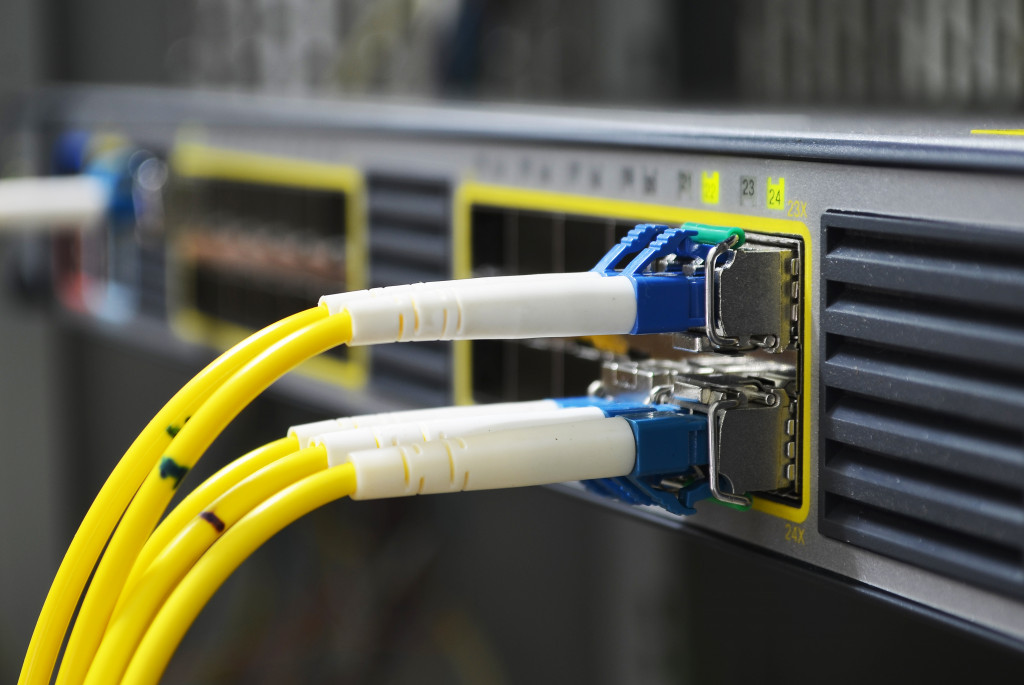In the past, servers were mainly used by large corporations and government establishments. It costs a lot of money to build servers from scratch. Servers provide a cost-effective way for companies to store their data and applications securely with access from all their branches or different geographical locations worldwide.
But this trend has changed. These days, the internet is dotted with online applications such as SaaS (Software as a Service), PaaS (Platform as a Service), IaaS (Infrastructure as a Service), and others. Nowadays, individuals can easily access these services using their home servers. Servers for home use require a home network to access these services and a 24/7 internet connection.
You do not necessarily need all the equipment mentioned below to run your server. However, it would be best to plan how you will set up your home server before buying this equipment.
Server Computer
You will need a dedicated computer for the server. This computer must always be switched ON and connected to the network for sharing purposes. The server’s primary function is to provide storage space, which allows you to store all your data and files securely on the same network. You can use it to host a website or a file server for other devices to access at home.
There are different types of servers, and you can choose a machine that fits your requirements because some servers do not need to be powerful computers. For instance, DIY hobbyists have used Raspberry Pi and Arduino computers for their home media and file servers.
Uninterruptible Power Supply
Uninterruptible power supply (UPS) solutions for a server room are necessary to keep the server and the server equipment running 24/7. You can have a UPS for the server, modem, and router and a power strip for other devices.
Internet connection
You can opt for a DSL or fiber connection as long as they support speeds of 30mbps and above. The advantage of using DSL is that it does not require any additional equipment to access the internet.
Modem
Broadband comes with a built-in modem. However, you will need a router to connect multiple devices to the modem. If your ISP does not provide a router, you can purchase one from any electronic store or order it online from sites such as eBay and Amazon for meager prices. A typical modem costs around $30.
Router
A router is an essential device for home networking. The primary function of a router is to connect the devices in your network to the modem. It also sets up internet connection sharing, which allows you to access the internet using multiple computers in your household. A typical router costs around $50 online or at your local electronic store.

Ethernet cable
You will need an Ethernet cable if you are using a modem and a router. If you have more than one computer at home, you can connect using a separate Ethernet cable. You can even daisy-chain two routers together or use a switch to expand the network. You can also connect to the router without a cable if the switch or router has Wi-Fi Capability.
Switch
It is not compulsory, but it will be helpful if you want to daisy-chain two routers together or increase internet ports. You can easily find a 4-port switch at your local store for less than $15 or order online from sites such as eBay or Amazon.
Drive Bays
Typically, you would need a large storage capacity. You can attach several hard disks or SSDs to your server via USB connections. Storage drive bays for multiple hard disks are available on the market and can expand your storage capacity severalfold.
Printer
A printer is not compulsory, but it will be helpful to share the printer from your system. You can use this method to connect all the computers in your house to the same printer.
Power strip
You can use the same power strip to connect all your devices to the same power source. You can use a single power strip to connect your modems, router, and switches to the same power source. A typical 8-outlet surge protector will work just fine.
Server software
There are several software tools you should consider for the server. There is the server OS, file server software, web server, and others. You can use Windows Media Center to serve as a media server. If you have a laptop, you can use it as a remote control for viewing photos and videos stored on your home network. There is other server software that you can install for specific purposes like file sharing, automatic backup, and as a media server.
A network server is not standard equipment that you should have at home. There are only a few instances when a server makes sense for an ordinary house. However, even though it is a technical task, setting up a server or a server room at home is not very difficult. Many individuals do not use the services of an ISP (Internet service provider). Instead, they opt to be their ISP. It allows them to save hundreds of dollars per month on accessing the internet.

